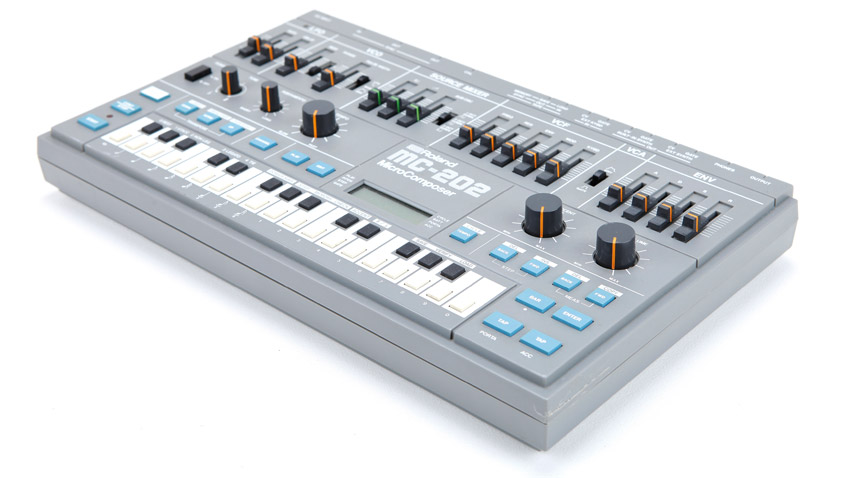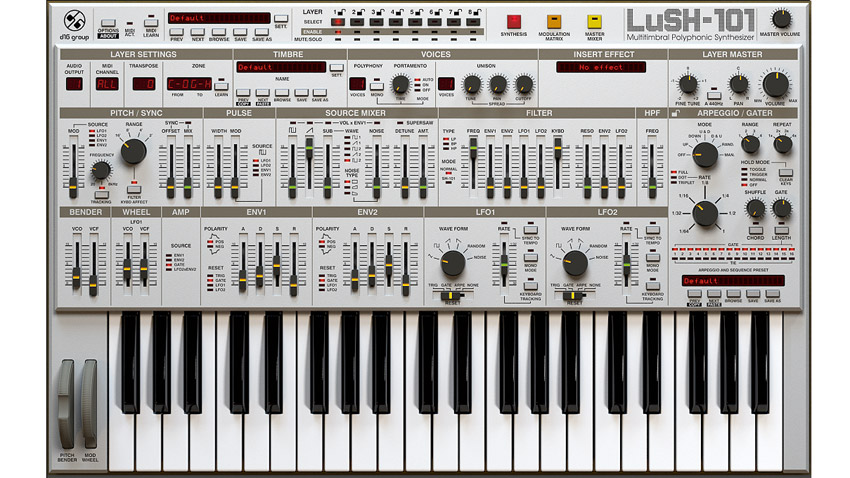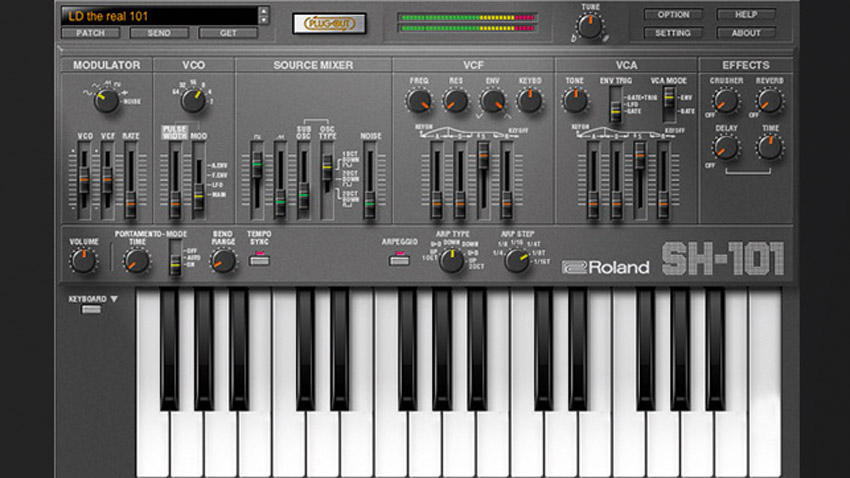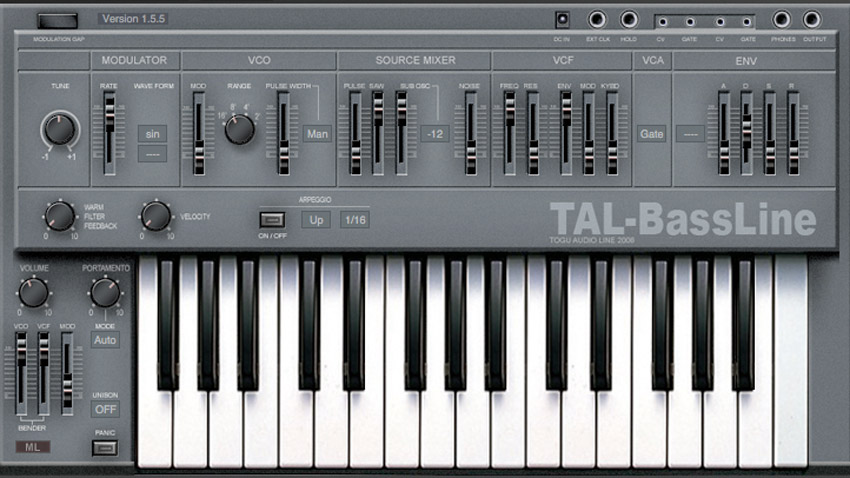Blast from the past: Roland MC-202 MicroComposer
A notoriously poor seller upon release, this little grey gadget is a near perfect combination of some of Roland’s most famous machines

Even the most studied aficionado of analogue esoterica could be forgiven for overlooking Roland’s MC-202. And that’s just what music buyers did upon its release in 1983. A dismal failure at the time, the 202 should have been a runaway hit, slotting in perfectly between the company’s much-loved SH-101 monosynth and the legendary TB-303 Bass Line - and not merely in name, but by design, as well.
You see, the MC-202 was something of a mishmash of three of Roland’s 1980s classics. Referred to as a ‘MicroComposer’, it was intended as a successor to Roland’s MC-4 and MC-8 MicroComposers - dedicated sequencers designed to control external hardware. Like those beige boxes, the MC-202 sports CV and gate jacks around back, meant for sequencing your favourite analogue instruments. Yet the 202 also included a rather spiffy in-built synthesiser that bore more than a passing resemblance to the SH-101, both physically and sonically; and its form factor was surely derived from the 303.
Like the 101, it provided a single monophonic oscillator that offered up sawtooth, pulse and sub-oscillator waves that could be dialled in simultaneously via sliders to create some unusual combination waveforms. Pulse width could be adjusted with a slider, and modulated by the included LFO or single four-stage envelope generator (which, as on the 101, was also assignable to VCA and filter cutoff). One goodie not found on the SH-101? The ability to delay the LFO - a feature found on some of Roland’s more expensive instruments.
Like the 101, it provided a single monophonic oscillator that offered up sawtooth, pulse and sub-oscillator waves that could be dialled in simultaneously via sliders to create some unusual combination waveforms.
And then there’s that filter, the very epitome of the New Wave sound. The MC-202’s VCF section looks as if it were torn right from the SH-101’s front panel. A 24dB affair, it offered all the squelch and squeal we’ve come to love.
However, the MC-202 wasn’t a direct port of the 101, lacking the 101’s noise generator, as well as the LFO’s square, random and noise shapes.
Of course, the 202’s sequencer would have been a major perk for the very few that bothered to check it out. A two-channel affair (one for the internal synth, one for external instruments), it was capable of storing over 2500 notes… though not across power cycles. Notes could be entered by playing the miniature push-button keyboard in real time, tapping in notes and rhythm separately, or by entering pitch, note and rest values via step input. Accent and glide are also on tap.
If you haven’t cottoned on yet, we’ll point out that the MC-202 closely resembles the miniaturised grooveboxes that clutter the tabletops of today’s electronic musicians. Though Roland have got some stick for repurposing their old tech in the form of the popular Boutique series, it’s clear that they’ve been down this road before!
Get the MusicRadar Newsletter
Want all the hottest music and gear news, reviews, deals, features and more, direct to your inbox? Sign up here.
Alas, they were 35 years ahead of their time. The MC-202 holds the distinction of being the worst-selling Roland instrument of its decade. Finally receiving some recognition, secondhand prices are beginning to climb, but have not quite reached the heights of the instruments it most closely resembles.
The closest you can get to a virtual 202

D16 Group LuSH-101
Dedicated MC-202 emulations are all but non-existent. However, since the 202 shared so much with the SH-101, we can look to clones such as the over-specified LuSH-101 from Polish developers D16. This has all the features and sounds of a 101, plus a beefed-up arpeggiator section and modulation matrix.

Roland Cloud
For a purely Roland sound, why not go to the source? The Japanese music giants have recently been churning out numerous hardware variants on the 101. A subscription to their new Roland Cloud service will land you a plugin version that integrates with - but doesn’t require - their System 8 Plug-Out hardware.
Find out more about Roland Cloud

TAL-Software Tal-BassLine
When it comes to SH-101 emulations, it’s hard to beat TAL-BassLine, given its price (or lack thereof). However, this fabulous freebie is a serious contender even against commercial clones. It’s cross-platform and has a quality sound, as you’d expect from TAL. The interface will be instantly familiar, and seasoned 101-ers will have no trouble getting around.


Computer Music magazine is the world’s best selling publication dedicated solely to making great music with your Mac or PC computer. Each issue it brings its lucky readers the best in cutting-edge tutorials, need-to-know, expert software reviews and even all the tools you actually need to make great music today, courtesy of our legendary CM Plugin Suite.
“From a music production perspective, I really like a lot of what Equinox is capable of – it’s a shame it's priced for the post-production market”: iZotope Equinox review
"I didn't know you could change the tempo in Pro Tools, so I just made all my songs at 120bpm": Super-producer Benny Blanco reveals the surprising reason why most of his early hits are the same tempo





![PRS Archon Classic and Mark Tremonti MT 15 v2: the newly redesigned tube amps offer a host of new features and tones, with the Alter Bridge guitarist's new lunchbox head [right] featuring the Overdrive channel from his MT 100 head, and there's a half-power switch, too.](https://cdn.mos.cms.futurecdn.net/FD37q5pRLCQDhCpT8y94Zi.jpg)




